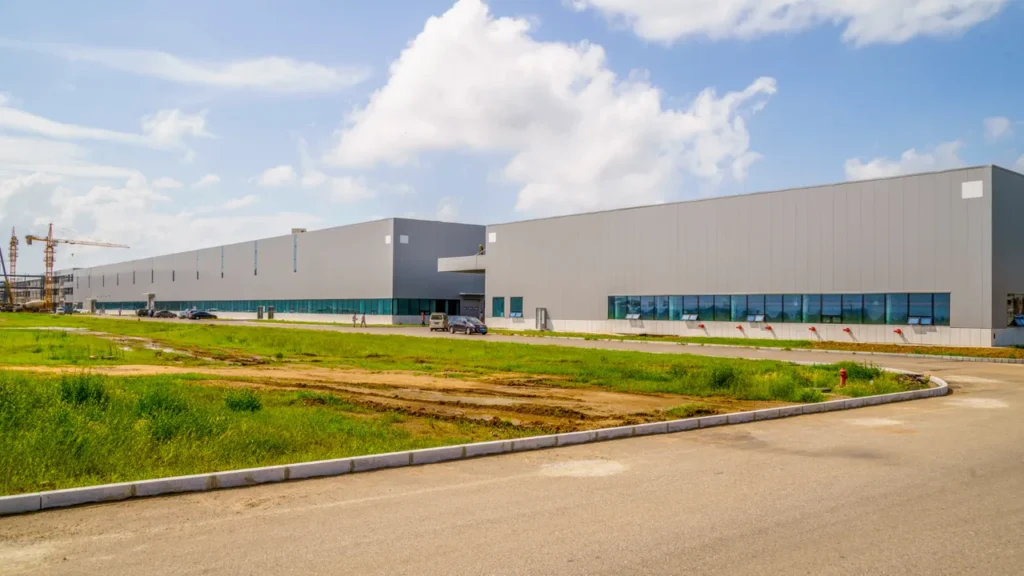Industrial park manufacturing has become one of the most decisive forces behind global economic expansion. By combining advanced infrastructure, logistics connectivity, and policy support, these dedicated zones turn regional resources into industrial powerhouses. Across the world, governments and investors are realizing that the most efficient way to stimulate a regional economy is to create an environment where manufacturing can grow sustainably—and that environment is the industrial park.
Understanding the Concept of Industrial Parks
Definition and Core Characteristics
An industrial park is a purpose-built area designed to host manufacturing and related businesses within a shared ecosystem. The concept of industrial park manufacturing integrates production, logistics, utilities, and services in one planned zone. Typical features include modern transport access, energy supply, waste-management facilities, and digital infrastructure, all of which reduce operational costs and increase efficiency. This concentration of infrastructure allows manufacturers to focus on innovation and production rather than maintenance or utilities.
Evolution of Industrial Parks
The roots of industrial parks date back to the early 20th century when cities began creating zones to separate heavy industries from residential areas. Over time, the model evolved into organized clusters with dedicated supply-chain networks. Modern examples, such as Suzhou Industrial Park in China or Ruhr Industrial Region in Germany, demonstrate how industrial park manufacturing can transform an entire regional economy. These parks no longer just provide land—they deliver end-to-end infrastructure, from renewable energy to advanced data networks.
The Strategic Role of Industrial Parks in Manufacturing
Centralized Infrastructure and Cost Efficiency
One of the key advantages of industrial park manufacturing lies in shared infrastructure. By pooling resources such as water treatment, logistics hubs, and power distribution, companies benefit from economies of scale. This model reduces capital expenditure for individual manufacturers while ensuring reliability and sustainability. Centralized waste-management systems, internal roads, and warehouse clusters further enhance productivity and attract investors seeking operational stability.
Innovation and Cluster Synergy
Industrial parks nurture innovation through proximity. When manufacturers, suppliers, and research institutions operate within the same ecosystem, knowledge transfer becomes effortless. This “cluster effect” accelerates product development and fosters collaborative R&D. Many industrial park manufacturing hubs have evolved into innovation districts, blending traditional production with high-tech research. The synergy between infrastructure, talent, and technology transforms industrial parks into innovation accelerators rather than mere factory zones.
Industrial Parks and Regional Economic Growth
Job Creation and Skill Development
Every successful industrial park manufacturing project creates ripple effects across the regional economy. Thousands of direct jobs emerge—from construction and engineering to management and logistics. Indirectly, new opportunities appear in housing, retail, and education. Governments often collaborate with training centers and universities to align workforce skills with industrial demands, ensuring that growth remains inclusive and sustainable.
Supply Chain Expansion and Trade Facilitation
Industrial parks act as gateways that connect manufacturers to domestic and global markets. Strategically positioned near ports, railways, or airports, these zones simplify import and export processes. Efficient customs services and bonded warehouses enable faster turnover of goods. For instance, according to Wikipedia’s overview of industrial parks, integrated logistics and trade facilities are among the main reasons multinational corporations choose to establish factories in these zones.
Infrastructure as the Foundation of Industrial Park Manufacturing
Transportation and Connectivity
Reliable transportation networks form the backbone of any industrial park manufacturing strategy. Highways connect suppliers, ports handle exports, and rail lines move bulk materials efficiently. When these systems converge, manufacturers gain unprecedented logistical flexibility. A well-connected industrial park can cut delivery time, reduce transportation costs, and improve just-in-time production flows—key factors in a competitive global market.
Utilities and Smart Infrastructure Systems
Infrastructure is not limited to roads and power lines. Modern industrial parks adopt smart-grid systems, renewable-energy integration, and digital management platforms. Water recycling, waste heat recovery, and IoT-based monitoring ensure efficient use of resources. These technological upgrades redefine how industrial park manufacturing operates, turning traditional zones into intelligent production ecosystems capable of self-optimization.
Environmental and Sustainability Aspects
Green Industrial Parks
In recent years, the concept of green industrial parks has gained global attention. These are designed not only for economic efficiency but also for environmental responsibility. Through energy-efficient systems, circular resource use, and pollution control technologies, industrial park manufacturing can align with global sustainability goals. Developers now incorporate renewable energy sources, green roofs, and eco-friendly water systems, reducing the environmental footprint of manufacturing zones.
For instance, several eco-industrial parks in Scandinavia and East Asia operate based on symbiotic energy exchange—where one company’s waste becomes another’s raw material. This closed-loop system represents the future of sustainable infrastructure planning. By integrating renewable energy grids and carbon monitoring, these parks turn sustainability into a competitive advantage.
ESG and Corporate Responsibility
The rise of Environmental, Social, and Governance (ESG) standards further strengthens the connection between industrial parks and corporate ethics. Manufacturers within such zones are encouraged to adopt clean production methods, transparent reporting, and responsible labor practices. Governments also play a role by offering tax incentives for companies that meet environmental benchmarks. Consequently, industrial park manufacturing contributes to both economic performance and global climate goals.
Global Trends and Future Outlook
The Rise of Smart and Digital Industrial Parks
The next generation of industrial park manufacturing will be defined by digital transformation. Smart parks leverage sensors, big data, and automation to optimize daily operations. Artificial intelligence (AI) manages traffic flows, predictive maintenance, and energy consumption. Digital twins—virtual models of real assets—enable real-time monitoring and performance forecasting. As a result, operational efficiency and sustainability coexist in a single, intelligent ecosystem.
Governments and developers worldwide are experimenting with “Industry 4.0-ready” zones. These integrate robotics, 5G connectivity, and autonomous logistics vehicles. By turning data into actionable insights, industrial park manufacturing achieves higher output with less waste—paving the way for sustainable industrial competitiveness.
Policy and Investment Outlook
Government policies remain a crucial factor in industrial park success. Through incentives like reduced land costs, streamlined licensing, and infrastructure subsidies, countries attract both domestic and foreign investors. In emerging economies, industrial parks are a gateway for industrialization, helping nations diversify exports and strengthen local supply chains. For investors, industrial park manufacturing represents a low-risk, high-return opportunity supported by physical and institutional infrastructure.
Challenges and Opportunities Ahead
Balancing Growth and Sustainability
Despite their success, industrial parks face a growing challenge—how to balance rapid industrial expansion with environmental conservation. Overuse of resources, waste management issues, and energy inefficiency can threaten long-term viability. However, with strong policies and advanced technologies, these risks can be mitigated. Sustainable industrial design, renewable energy integration, and circular economy models can help industrial park manufacturing remain both productive and eco-conscious.
Global Supply Chain Resilience
The COVID-19 pandemic exposed vulnerabilities in global supply chains. Industrial parks are now adapting to ensure resilience. Developers emphasize localized production networks, digital transparency, and redundancy in logistics. By creating regional manufacturing hubs closer to consumers, industrial park manufacturing enhances economic security and reduces dependence on long global supply chains. This new resilience model also improves the adaptability of regional economies to geopolitical or environmental disruptions.
Conclusion
Industrial park manufacturing stands as a proven model for sustainable economic development. It merges efficiency, innovation, and environmental care within one integrated ecosystem. By providing top-tier infrastructure, fostering cluster synergies, and supporting regional employment, industrial parks continue to power the engines of modern manufacturing. From Asia to Europe and beyond, they remain the foundation of global production networks and a cornerstone of resilient industrial growth.
As the world transitions toward greener and smarter systems, industrial parks will evolve from static production spaces into dynamic innovation communities—supporting both human progress and planetary health. For policymakers, investors, and manufacturers alike, embracing this transformation ensures that industrial park manufacturing remains the backbone of economic growth for decades to come.



